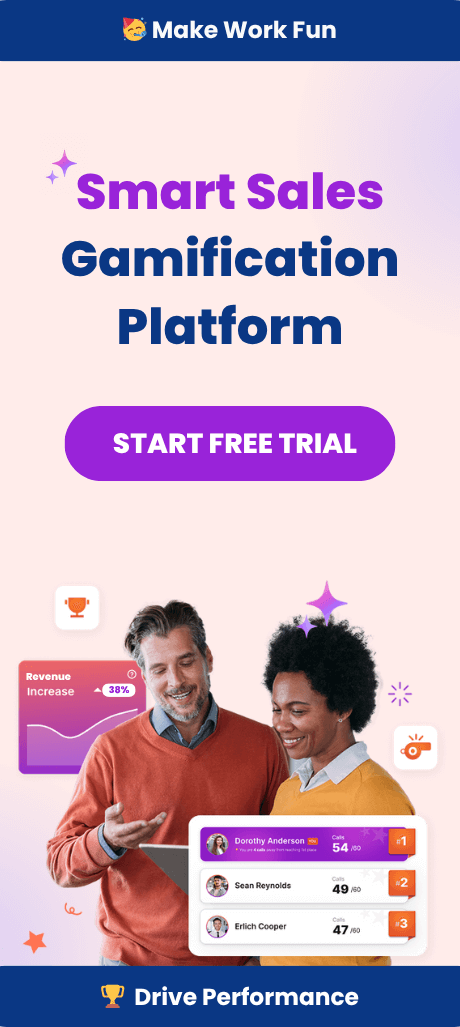Digital Leaderboards: The Modern Performance Catalyst
Sales organizations are continuously recalibrating how they measure and motivate high performance. In an era where human connection tangles with data analytics and distributed work, digital leaderboards have emerged as a compelling focal point of modern achievement. No longer reserved for quarterly rallies or annual reviews, these tools now pulse through daily operations, impacting culture, performance, and engagement across the spectrum. Their role is elevated, not just as measurement devices, but as catalysts — quietly shaping the behavior and ambition of entire teams. For Sales VPs, Enablement Leads, RevOps Directors, and CEOs, understanding the current and future impact of leaderboards is critical for sustained effectiveness.
The Shift from Traditional to Digital Performance Metrics
The journey from sticky-note sales trackers to digital dashboards reveals more than a technological upgrade. It encapsulates a new philosophy around transparency, real-time feedback, and the social dimensions of workplace motivation. In legacy models, leaderboards were static, often vulnerable to delay and inaccuracy, reducing their relevance to the everyday grind. Modern digital leaderboards are dynamic and integrative, feeding off live data from CRMs, engagement platforms, and communication tools. Their real power is not in display alone, but in the immediacy and accessibility of performance information for every team member.
This transition mirrors broader corporate behavioral shifts. Where once information hoarding was the norm, today’s market winners embrace transparency as a motivator and equalizer. The digital format removes bottlenecks, giving all contributors—from new hires to seasoned A-players—constant insight into team standing and personal contribution. More importantly, it democratizes recognition and feedback, shifting the mindset from isolated competition to collective progress.
Why Digital Leaderboards Resonate in Hybrid Environments
As hybrid and remote structures become standard, fostering cohesion and belonging becomes challenging. For geographically decentralized teams, daily pulses of activity, celebration, and feedback are easy to lose. This is where digital leaderboards find their deepest relevance. They provide a visible, shared canvas where progress is documented and celebrated, regardless of physical proximity. The leaderboard does more than tally wins—it preserves the connective tissue that so often frays with distance.
Leaders find that digital leaderboards act as a virtual watercooler, sparking conversations, fueling friendly rivalry, and uniting far-flung colleagues through shared milestones. When configured thoughtfully, they highlight not just top billers, but consistent improvers, collaborators, and innovative problem-solvers. In this way, they expand the field of visible success and strengthen the daily rituals that build team culture.
From Scorekeeping to Strategic Enablement
Perhaps the most significant transformation in leaderboard philosophy is their new role as vehicles of strategic enablement. Rather than simply recording outcomes, advanced leaderboards—especially those integrated with broader employee gamification platforms—can drive coaching, learning, and talent development. By surfacing granular metrics on behaviors (calls made, demos booked, deals progressed), leaders gain visibility not just into who is winning, but how they are winning. These insights allow for quick, targeted interventions, more relevant stretch goals, and individualized development tracks.
For example, if a top rep is outperforming through unusually high demo-to-close ratios, that process can be studied and shared across the team. Conversely, if a group is lagging behind due to pipeline stagnation, the leaderboard highlights the bottleneck before it becomes a quarterly crisis. This proactive approach transforms the leaderboard from a scoreboard to a powerful lever for continuous improvement.
The Science of Recognition and its Cultural Impact
Recognition remains one of the most reliably effective levers of workplace engagement. Yet, as outlined in The Power of Employee Recognition: Why It Matters More Than Ever, not all recognition is equally impactful. Digital leaderboards, when constructed with inclusive logic, can amplify public acknowledgment while mitigating envy or demotivation among lower performers.
There are science-backed reasons for this effect:
- Immediate Feedback: Research shows that recognition delivered close to behavior is more motivating and reinforces desired performance patterns.
- Frequency of Visibility: Daily and weekly updates foster healthy ongoing competition rather than occasional, high-pressure sprints.
- Diversity of Achievement: Boards that reward a spread of KPIs—such as collaboration, learning, or customer satisfaction—help all contributors find a path to the spotlight.
Collectively, these features shift the organizational climate from scarcity (few winners) to abundance (multiple paths to success), increasing overall job satisfaction and retention.
Customization: The Key to Fair and Sustainable Competition
One size rarely fits all in high-performing teams. The best digital leaderboard tools are customizable, allowing organizations to select the metrics and reward categories that align with their unique strategy and values. The Why Customizable Leaderboards Inspire Sales Teams post further explores how tailored competitions avoid the pitfalls of generic structures.
Customization matters for several reasons:
- It enables fair contest structures across different roles (SDRs vs. closers, new vs. experienced teammates).
- It allows for periodic metric rotation, keeping motivation fresh and broadening development focus.
- It lets leaders spotlight behaviors aligned with quarterly or annual priorities—collaboration today, efficiency tomorrow.
By making leaderboards context-sensitive, companies avoid the burnout and exclusion traps that often dog old-school, winner-take-all competitions.
Digital Leaderboards as Employee Engagement Engines
When technologists and HR strategists collaborate, leaderboards are increasingly woven into employee engagement strategy. They become more than artifacts of sales—they anchor onboarding, peer-to-peer coaching, employee recognition programs, and even learning management. By treating a digital leaderboard as an organizational engagement platform, leaders give their teams a persistent sense of momentum and shared ambition.
Three core areas where digital leaderboards directly drive engagement:
- Accelerating new hire ramp-up by visualizing onboarding progress
- Creating peer-driven micro-recognition cycles that supplement top-down praise
- Enhancing leadership transparency by making strategic KPIs visible and relevant to daily operations
The outcome is a virtuous cycle where achievement, feedback, and improvement become woven into the fabric of everyday work—and not simply reserved for formal reviews.
Integrating AI into Digital Leaderboards
The future of leaderboards is inseparable from artificial intelligence. As highlighted in AI Gamification: Rethinking Employee Engagement, AI can drive relevance and personalization in sales gamification, surfacing custom contests, adaptive challenges, and predictive nudges that maximize motivation for each rep. Digital leaderboards empowered by AI take engagement to the next horizon by:
Personalizing Recognition
Algorithms identify individual motivators and craft recognition moments that resonate with personal work styles or aspirations—be it competition, autonomy, or mastery.
Predictive Coaching
Instead of simple alerts, AI-powered leaderboards surface suggestive metrics: “Based on your trend, booking two more calls this week could push you into the top tier.” This reframes metrics from passive observation to actionable insight.
Team Dynamics Analysis
Machine learning can detect when certain leaderboards, structures, or reward types are losing traction, providing live experiment results on new strategies faster than quarterly surveys ever could.
Potential Pitfalls—And How the Best Teams Avoid Them
Like any performance management tool, poorly designed digital leaderboards can become a source of stress, exclusion, or gaming of the system. The difference lies in thoughtful design, leadership communication, and willingness to adapt structure over time. Teams that sustainably succeed with digital leaderboards:
- Ensure inclusion by rotating metrics and surfacing diverse forms of contribution
- Pair quantitative insights with qualitative recognition—numbers matter, but so do stories and context
- Use leaderboards as coaching triggers rather than blunt compliance tools
Poorly contextualized competition leads to disengagement and, at worst, toxic culture. But when guided by principle and empathy, digital leaderboards remain positive, trusted, and growth-oriented.
Building Leaderboards into Long-Term Talent Strategy
For executive leaders, the critical question is not whether to implement leaderboard technology, but how to weave it into a long-term approach for talent development and engagement. The most admired sales organizations treat digital leaderboards as a strategic pillar—integrated from employee onboarding, through peak performance, to succession planning. The sales process becomes not just about closed deals, but about growth journeys that are visible, measurable, and celebrated in real time.
Choosing a Digital Leaderboard Platform with Impact
In a marketplace flooded with engagement software, the choice of digital leaderboards must align with organizational culture, data strategy, and user experience goals. Executive buyers should evaluate platforms on:
- Integration capabilities with existing CRMs and workflow tools
- Customization and rotation flexibility for diverse team needs
- Analytics, reporting, and AI-feature depth
- Ease of administration and intuitive UX for both managers and team members
Platforms like Spinify offer rapid deployment, deep metric customization, and robust AI-enhanced features that align with both current industry best practices and emerging future needs. By choosing proven, innovative solutions, organizations can accelerate the shift from insight to action, improving satisfaction and performance in measurable ways.
Conclusion: Rethinking Achievement for Modern Teams
Digital leaderboards are much more than updated scoreboards. They are living systems shaping how people perceive performance, how leaders intervene for growth, and how cultures coalesce around shared ambition. For organizations willing to invest not only in the technology but in the supporting processes and philosophies, leaderboards offer a pathway to continuous improvement, genuine engagement, and sustainable high performance. As we look beyond the next quarter, they will anchor the future of strategic enablement—proving that motivation and accountability, when made visible, can fuel a workplace where everyone wins.



